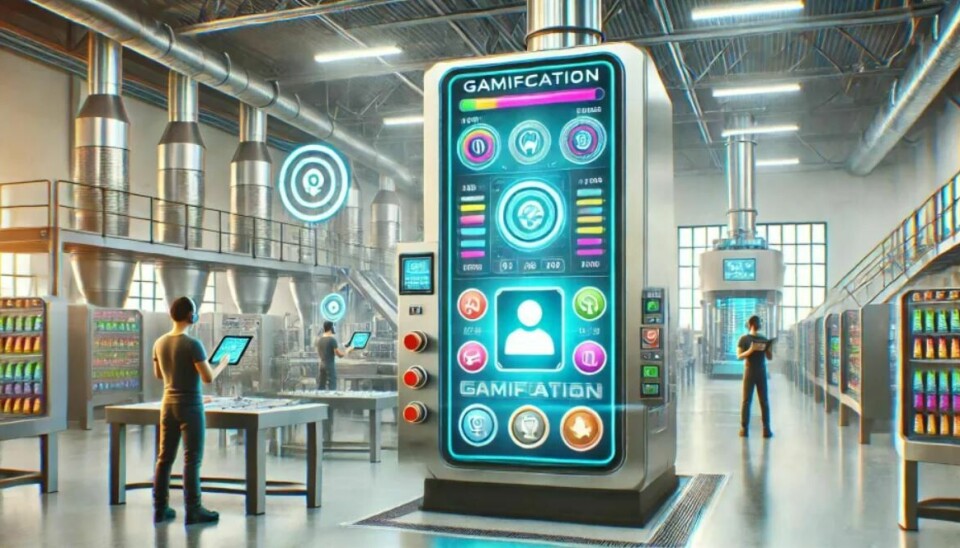Shall we play a game?
Interview with Prof. Dr. Alexander Kutter about gamification in (packaging) mechanical engineering

At the latest when the Gamescom trade fair in Cologne starts, you regularly read and hear the term 'gamification' again. But what exactly is behind it? And what role could it play in mechanical engineering in the future? We spoke with someone who knows.
Professor Kutter, today we want to talk about the topic of gamification. This is, of course, a very broad field and is applied in many industries. So what does gamification mean in general - but also specifically in mechanical engineering, and where is it used?
Prof. Dr. Alexander Kutter: That is correct, gamification is a very broad field, and the definition depends a bit on whom you ask. A game, for example, is something you do voluntarily - that is a very important point in the definition. If we think of movies like *Saw*, where there are also "games," these are not voluntary. Moreover, a classic game has fixed rules, usually with a clear beginning and defined end, as well as a measurable goal where someone wins. Of course, there are also endless games where you play alone, like Tetris, but that does not apply to the majority of games. Gamification can also be used in mechanical engineering, for example, in training or the use of machines. There are very specific use cases where playful elements can be integrated into the workflow.
A typical example is the use of welding simulators. Here, trainees can learn playfully by collecting points and directly measuring their progress. At the end, there is an evaluation where you can see how well you performed - for example, how fast or precise you worked. These high score systems or progress bars make learning not only more effective but also more entertaining. Another example is the possibility of 'gamifying' workdays, such as collecting points for the company when giving presentations or taking on community tasks. Such social points can then be redeemed for rewards like days off or vouchers. So, it's about more than just fun - it aims to promote employee engagement and motivation.

In many cases, gamification in mechanical engineering seems to be applied primarily in training. Is that the main area where this concept is used?
Kutter: Yes, that is indeed a common application for gamification. In training, such as with the aforementioned welding simulators, the integration of playful elements supports the learning process. These simulated environments allow participants to practice repeatedly under practically 100% identical conditions without losing the learning effect - on the contrary, through repeated application and playful incentive, learning becomes even more effective. Games like Candy Crush or Flappy Bird show how reward systems work: they stimulate the brain and motivate players to return and improve. In mechanical engineering, it's similar: you set goals, reach milestones, and see progress, which can greatly increase learning motivation.
Can you also name practical examples where gamification has already been implemented in real mechanical engineering environments?
Kutter: There is a tablet manufacturer where customers could collect points during VR training, depending on how efficiently they worked. Another example that comes to mind is speed challenges in manufacturing, where the time and precision required to complete a task are measured. Here, too, progress is made visible, and there is a playful competition among employees.
You said gamification is supposed to promote motivation and fun at work. But how is this actually received in practice? Are such concepts accepted in companies, or are there concerns that employees will no longer take their work seriously?
Kutter: That depends on the approach. I would not necessarily put the term "gamification" in the foreground, as it risks evoking false associations for some people. Especially older employees who did not grow up with video games often have a different perception of work and play. They might resist with the motto: "This is not a game, this is work!" However, this does not mean that this group is not open and receptive to the mechanisms; it is mainly about wording and framing. In such cases, it can be helpful to focus on the benefits without directly labeling it as gamification. It could be introduced more as a system of performance enhancement or engagement promotion. It is also a question of the target group. Younger employees who grew up with games often have fewer reservations than older colleagues. But it is always important that it is perceived as a voluntary offer and not as a control instrument to monitor employee performance.
What role do the data obtained through gamification play? Even if it is not supposed to be a control instrument - can such data be used to optimize processes in companies?
Kutter: Absolutely. The data collected through gamification offers great potential for process optimization. A practical example is route optimization in the automotive industry. By recording movements and work processes, it is possible to analyze how efficiently work can be done. It is not just about pure productivity, but also about the physical strain on employees - for example, how often they have to bend or how much they have to walk. This data can be used to make work processes more ergonomic and increase efficiency. However, it is important that this data is evaluated meaningfully. There is no point in collecting vast amounts of data if you cannot turn it into meaningful actions.
Are there actually scientific studies that prove the benefits of gamification in mechanical engineering?
Kutter: There are already some scientific studies on gamification, but the results are not always clear. In some cases, gamification shows positive effects on engagement and motivation, while in other cases, the results are less significant. A doctoral thesis from 2023 showed that the success of gamification strongly depends on specific conditions. One might honestly say here: gamification does not work equally well everywhere, and sometimes there is no measurable positive effect. It is important, therefore, to be clear from the beginning about what goals you want to achieve with gamification. Is it about hard facts and productivity increases - or about the fun of work? Depending on the objective, success can vary.
How do you see the future of gamification in mechanical engineering? What developments are realistically implemented in the industry in the next five to ten years?
Kutter: I think gamification will play an important role, especially in training and education. Particularly through technologies like virtual reality (VR) and augmented reality (AR), gamification will be even more integrated into these areas. The playful component is already present in VR and AR, as you move and interact in a simulated environment. An exciting development could also be the introduction of machines with "character" - machines that communicate with the operator in a human-like way and, for example, indicate when maintenance is needed. This could elevate the interaction between humans and machines to a new level.